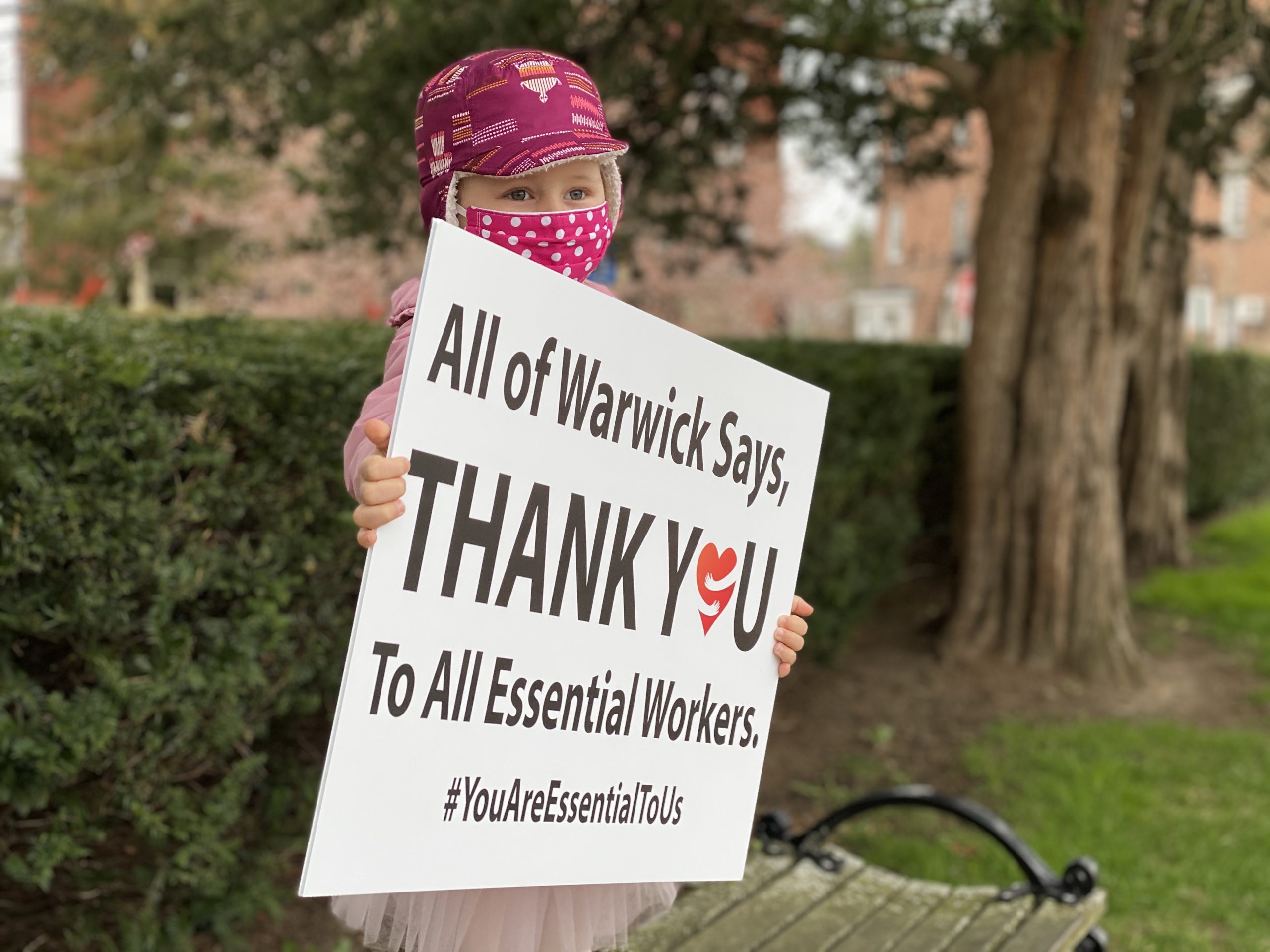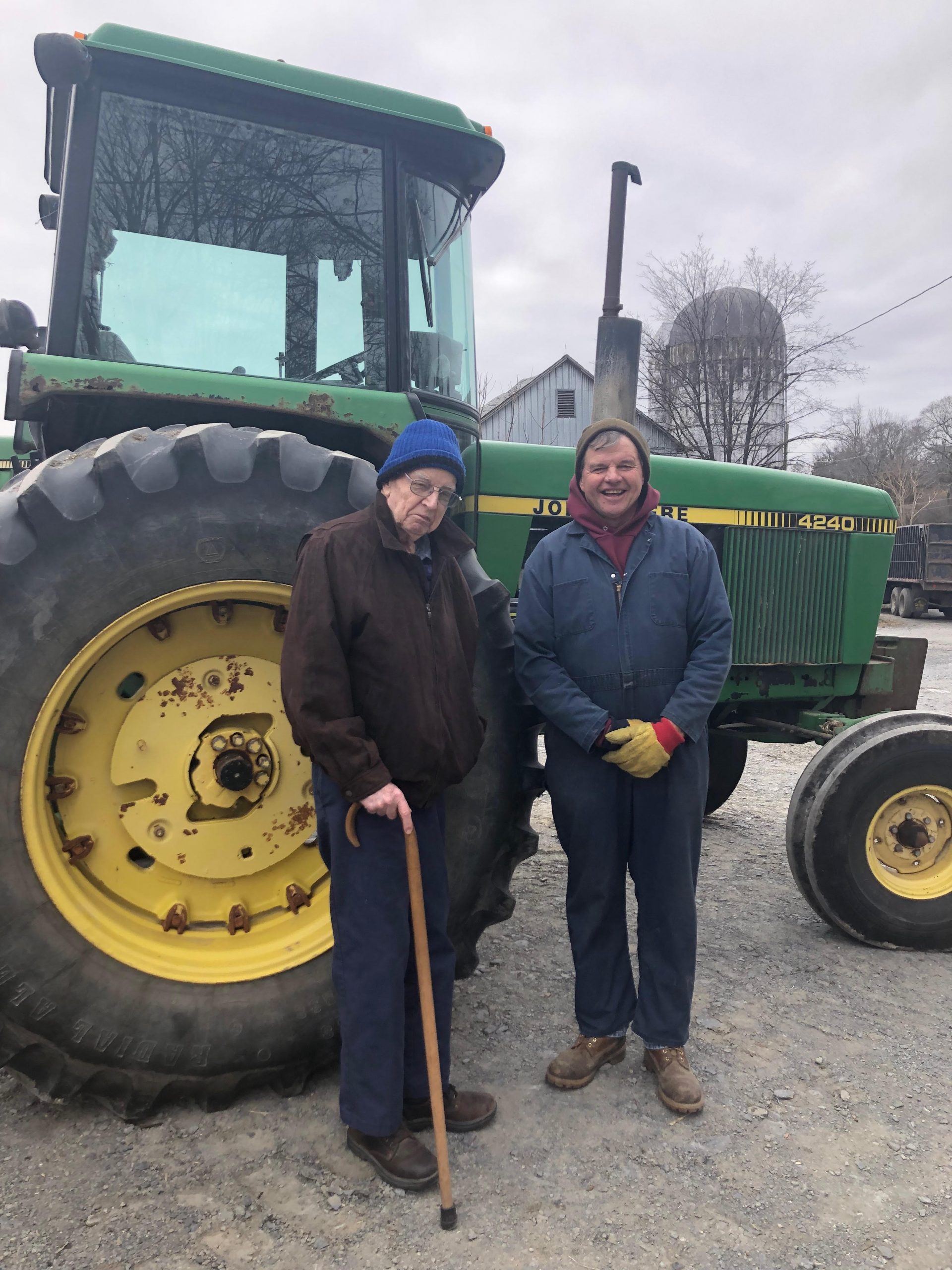By Katie Bisaro
More in-depth discussions took place at the second meeting of the Community Panel that has been convened to learn about and review police procedures and protocols of the Warwick Police Department as outlined in Governor Andrew Cuomo’s Executive Order 203 (EO 203).
EO 203 directs “each local government entity which has a police agency operating with police officers as defined under 1.20 of the criminal procedure law must perform a comprehensive review of current police force deployments, strategies, policies, procedures, and practices, and develop a plan to improve such deployments, strategies, policies, procedures, and practices, for the purposes of addressing the particular needs of the communities served by such police agency and promote community engagement to foster trust, fairness, and legitimacy, and to address any racial bias and disproportionate policing of communities of color.”
In addition to Town Supervisor Michael Sweeton and Warwick Police Department (WPD) Chief Thomas McGovern, the community panel consists of municipal officials and members of clergy; representatives from the district attorney’s office, school district, and business community; local activists, and residents who are former members of the NYPD.
The first meeting of the panel, which took place last month, was informational in nature as Warwick Police Chief Thomas McGovern outlined his department’s duties and responsibilities as well as current ways the police engage with the community.
At the second meeting, held on Mon., Nov. 16, there were broader discussions regarding more specific topics including bias, use of force, de-escalation and conflict resolution, accreditation and community relations.
Implicit Bias Training
Members of the WPD have all undergone bias training and are currently in the process of completing the second part, implicit bias training. Fifteen officers have already completed the implicit bias training course, 15 more are scheduled to participate in the next few weeks and eight more after that. Dispatchers are also included in the training sessions. Additionally, two officers will participate in “train the trainer” courses in order to continue, in-house, on an annual basis, the implicit bias training for the department.
Topics for discussion in relation to bias training that were raised included the need for training on an ongoing basis, ensuring that the training was in fact “bias training” as opposed to a course in “cultural sensitivity” and that the training is dynamic, engaging and meaningful and not just a “box” to be checked upon completion.
Kathy Brieger, who works with the Warwick Area Migrant Community, researched the bias training curriculum prior to the meeting and noted that it has changed over the years to include implicit bias and “real-life examples of how we all have some implicit bias,” and that the training had gotten good reviews from the police officers and the communities.
Reverend Ann Marie Bentsi-Addison Posey of the UAME Church added that there needs to be a commitment on the part of individuals and the department to understand the issues and to change as necessary.
“Forcing a training on someone does not guarantee they are going to receive it for what it is and actually get something out of it,” Posey said.
From an educator’s perspective, Dr. David Leach, Superintendent of the Warwick School District, said that training should be on-going, and that the trainers should have the ability to intellectually engage their audience for the best results. Moreover, the training should differentiate according to each officer’s experience. A new officer would have a different perspective and experience than a veteran member of the force. Dr. Leach also pointed out that the curriculum is a “living document” that needs to evolve with the times, with consideration for new research and trends, to keep it relevant to today and perhaps adapting it to the specific needs of the WPD.
Use of Force Policy
Sweeton reported that the WPD Use of Force policy is posted on the Town website (www.townofwarwick.org); it is updated and in compliance with New York State law.
He also commented that the new police academy in Middletown, NY provides the opportunity at times for civilians to be “in the shoes” of police officers through its simulation program. Sweeton has participated in the simulation and described the experience as “eye-opening” in terms of understanding the Use of Force Policy.
Chief McGovern briefly explained the process through which Use of Force incidences are investigated. If the use of force involves a shooting, or other serious physical injuries, the incident will be investigated by the District Attorney’s office and the State Police. For use of force less than a shooting or serious physical injury, the incident is investigated internally by WPD, going up the chain of command, eventually to the Lieutenants and the Chief. Sweeton noted that if the Chief were to be involved in a use of force incident, it would be turned over to the State Police.
Carotid Control Hold
The panel also discussed the use of the carotid control hold, which in certain circumstances is authorized under the law.
Shawnee Moore, a retired NYPD veteran who spent time in the Internal Affairs Bureau, questioned why the carotid control hold was not prohibited.
“If deadly physical force is authorized by law, then the carotid restraint is an authorized maneuver,” McGovern stated, adding, “There is always going to be someone who will, after the fact, analyze whether or not at the time it was appropriate. But, if there’s somebody fighting for their life and there’s nothing else you have left [to keep you] from you being killed, then it [the law] assumes that deadly physical force is authorized…you’re trying to save your own life.”
Moore, playing “devil’s advocate,” acknowledged that while there were situations in which an officer may find that deadly physical force is necessary, there were also situations in which “other restraints, other things one can do besides grabbing someone by the neck.” Chief McGovern agreed, but reiterated that in the “life and death” situation being described, from the perspective of the officer engaged in the action, the use of the carotid control hold is authorized under the law.
Ronald Martinez, who has organized local protests in the wake of recent police-involved deaths, brought up the situation during which George Floyd was killed by a police officer in Minneapolis with respect to use of deadly force and the way in which he died.
“I think that 99.9% of police officers, active or retired, in this country can agree that it [the way George Floyd was killed] was disgusting and completely uncalled for and it was completely against everything that dictates what we do, there’s no question there,” stated Angel Maysonet, a retired NYPD police officer with over 20 years on the force. He further explained the “use of force continuum,” a concept in which the suspect dictates the amount of force that is used by the police, responding to whatever the suspect is initiating.
Moore agreed, but also emphasized that there are “other tools in the toolbox” and that while the carotid control hold is legal, other means can be utilized as effectively.
Finally, Chief McGovern commented that there is a difference between the carotid hold, which is intended to restrict blood flow, and a choke hold, which restricts breathing. The carotid control hold, when applied properly, is meant to limit blood flow to the head rendering a suspect “woozy and eventually unconscious” which is the intended outcome. Applied incorrectly, the carotid hold may result in an outcome that is not intended.
“You’re [Moore] right, there’s other things you can do, but when it’s life or death, when it’s you or me, we’re going to figure it out…not the best choice always, certainly not used very often, but it’s there if needed,” McGovern stated.
De-escalation/Conflict Resolution
Another topic discussed by the panel focused on de-escalation and conflict resolution tactics, including the area of mental health. Sweeton asked the panelists for their thoughts, suggestions and ways to improve.
Sweeton reminded the panel, from the last meeting, that mental health response teams are dispatched from Orange County and are underfunded. Kathy Brieger, who works with the Orange County Commissioner of Mental Health on her Warwick Area Migrant Community board, pointed out that mental health issues have increased with the onset of the COVID-19 pandemic, particularly in the areas of isolation and domestic violence, across all demographics. She suggested continued cooperation with mental health officials and staff to address these issues.
Lewis Perry, who also worked for NYPD, is an advocate for community policing as a way for members of the police department to get to know those in the community they serve and potentially de-escalate a situation based on those relationships.
Chief McGovern reported that dispatchers in the department are often familiar with persons and/or locations where there are recurrent issues. Often, according to McGovern, the dispatcher will ask the responding officer to call into the station on the landline in order to give further details rather than broadcasting that information publicly over the radio. The officer is then better informed when responding to the call.
Police Department Accreditation
At the first panel meeting, the topic of police department accreditation was discussed. According to the New York Department of Criminal Justice Services (DCJS) website, found at www.criminaljustice.ny.gov, accreditation is “a progressive and contemporary way of helping police agencies evaluate and improve their overall performance [and] provides formal recognition that an organization meets or exceeds general expectations of quality in the field.”
The Warwick Police Department is not accredited by the state of New York. Sweeton commented that he felt the WPD had very high standards and asked the panel for their thoughts on accreditation, whether they thought it should be pursued. He also noted that it is a large administrative endeavor for which the department did not necessarily have the available staff or funds.
According to DCJS, several Orange County police departments are accredited including Cornwall, Harriman, Middletown, Monroe, New Windsor, Woodbury and the Orange County Sheriff’s Department.
Shawnee Moore commented that she feels accreditation is worth pursuing as “an acknowledgement to the community that our police department is dedicated to at least pursuing that effort of being accredited.”
Other panelists weighed in on various pros and cons of pursuing accreditation including whether time and funds would be better spent on training, community involvement, recruitment, etc. On the other hand, it was noted that achieving accreditation and a standard of excellence may help in recruiting efforts.
Community Engagement
At the last meeting, Lt. John Rader gave an overview of the various way’s members of the Warwick Police Department engage with the community. Sweeton asked the panel for other suggestions for further involvement.
There were two suggestions related to teenagers. The first idea was for a teen driver workshop that would include a mock “car stop” where a police officer and teen driver could simulate, in a controlled environment, the experience of being pulled over. The second suggestion involved candid conversations between police officers and teenagers on how to “steer clear” of trouble and make good decisions with regards to such situations as drinking and driving.
Student Resource Officers
Dr. Leach commented that the police are interacting with students now through the Student Resource Officers (SROs). SROs are present in every school building in the Warwick, Greenwood Lake and Florida school districts.
“They are cultivating relationships, they’re interacting with students whether it’s out on the playground or sometimes assisting with certain lessons,” Dr. Leach said and noted that the relationships are different at the elementary level than at the high school but overall is seen as an asset to the buildings, especially as a deterrent to potentially dangerous incidents.
Chief McGovern agreed noting that the relationship in the schools and with the community has evolved – when SROs started in the schools, people would call to ask why there was a police car parked in front of the buildings. Now, if there is no police vehicle in front of the school, people call to ask why it is not there.
Civilian Complaint Review Board
Sweeton reported that the Town does not currently have an official Civilian Complaint Review Board. He also pointed out that, in the last two years, there have not been any documented complaints filed against the police department. Forms are now available on the Town of Warwick website making it easier for citizens to file complaints, particularly someone who may not feel comfortable approaching an official in person.
“I always argue, we do have a civilian complaint board – it’s your elected officials,” Sweeton said, “we are elected by you to represent the residents of the Town of Warwick, myself and four other town board members. Any issue can be brought to us, and it is our duty and responsibility to investigate those and if there is wrong-doing, we will correct that, that’s our job.”
Ronald Martinez agreed to a certain point that some residents, including himself, have a “level of comfortability” to reach out to Sweeton or another elected official, but that may not be the case with other people in the Town. Another resident may prefer a “board” of citizens to bring up any issues.
Rev. Posey supported a civilian review process for complaints stating that residents in Warwick may have moved from another place where their experience with law enforcement or elected officials was not positive and they bring that mindset with them and may be reluctant, based on past experience, to approach those same officials here in Warwick.
“If they felt marginalized in those places [previous communities], it takes a lot to not feel marginalized in the new place,” Posey stated. She continued that it could be intimidating to someone who has had negative experiences to have to go to the police department to get the paperwork to make a complaint.
“We have an excellent police department, but if I don’t know that, and I have the experience of being on the margin, and I have the experience of being voiceless, there needs to be somewhere I can go and have a space at the table in order to bring my issues there,” Posey added.
According to Sweeton, there used to be a group called “Quality Communities Group” that met quarterly to discuss issues facing the community. At the time the group concerned itself with zoning and community growth. Sweeton is open to bringing that group back and include the police department or any other groups as necessary, to sit down and listen to new issues that may need to be addressed.
Next Steps
Under the Executive Order, Sweeton and the Chief have been tasked with preparing a plan based on the panel discussions and any public commentary that has been received by them regarding these issues. The document, which will highlight any changes suggested from the discussions and public input, will be shared with the panel for their comments and they may also reconvene to discuss.
Once the draft document is completed, a public hearing will be scheduled, probably in late January or early February, to hear public comment. Once finalized, the Town Board must approve the document and forward it to the State by April 1, 2021.

Shawnee Moore, who served for over 20 years in the NYPD, some of it spent in the Internal Affairs Bureau, spoke out about the use of the carotid control hold during a discussion on Use of Force at the second Community Panel meeting regarding the Warwick Police Department & its relationship with the community.






